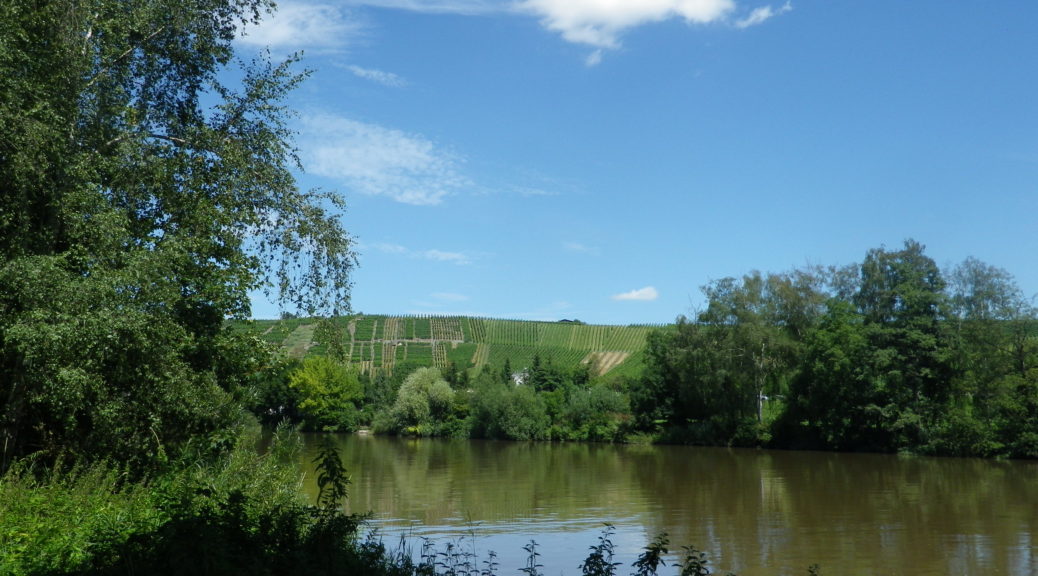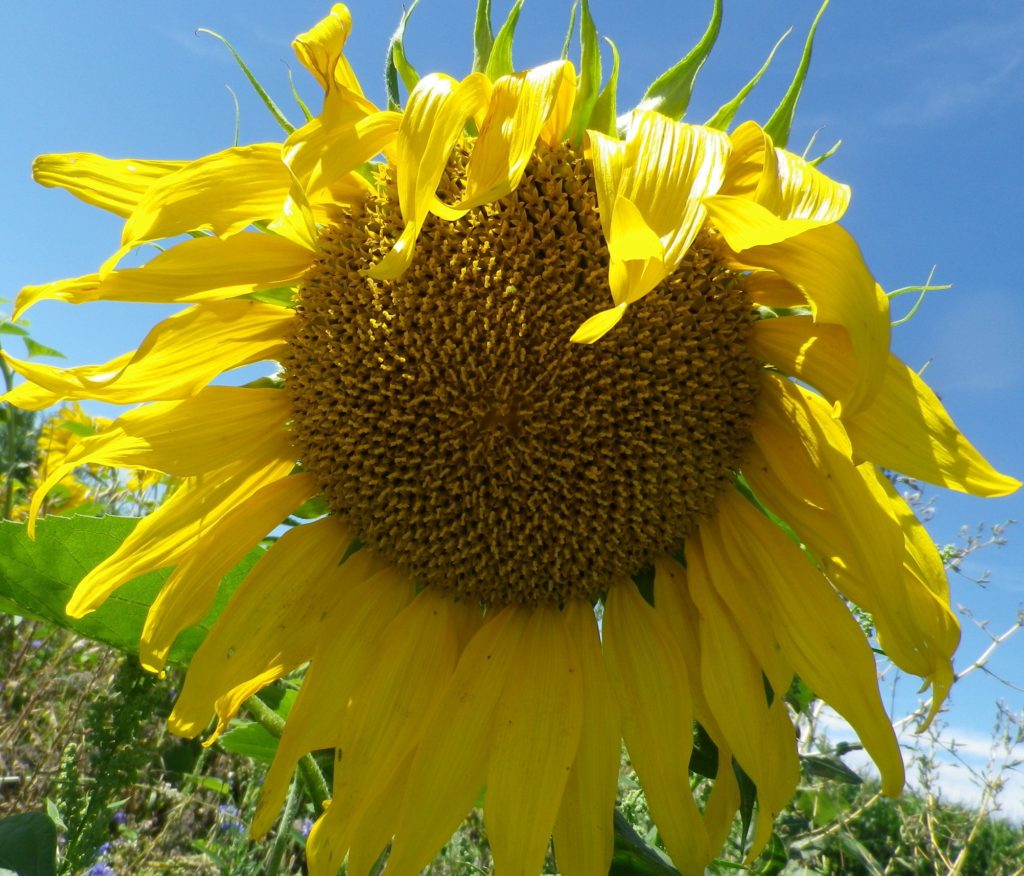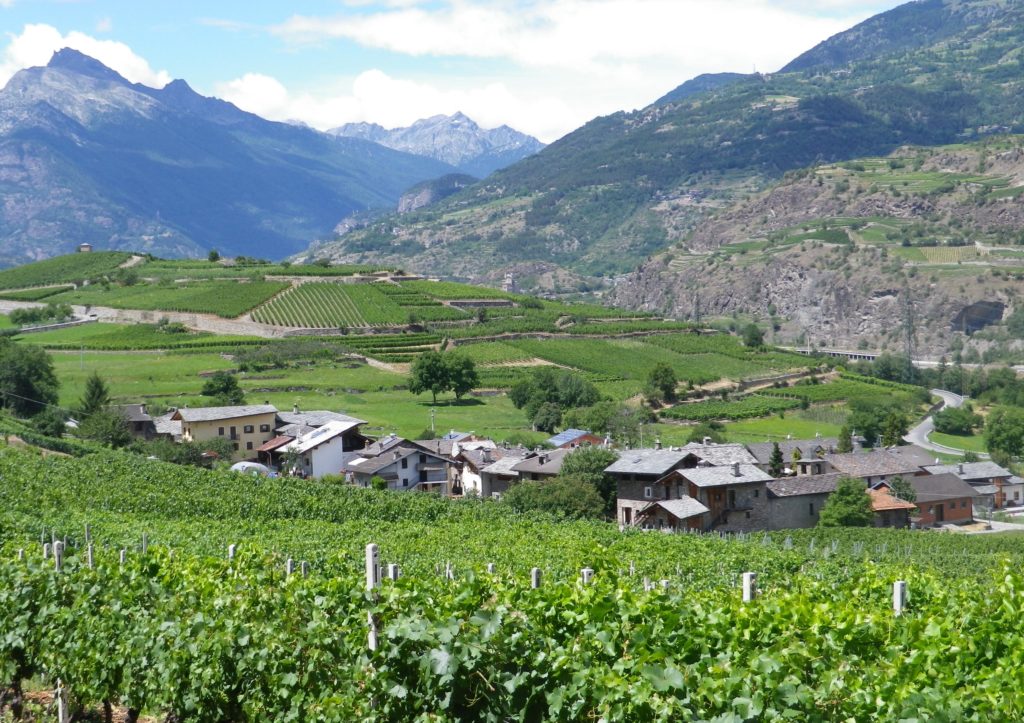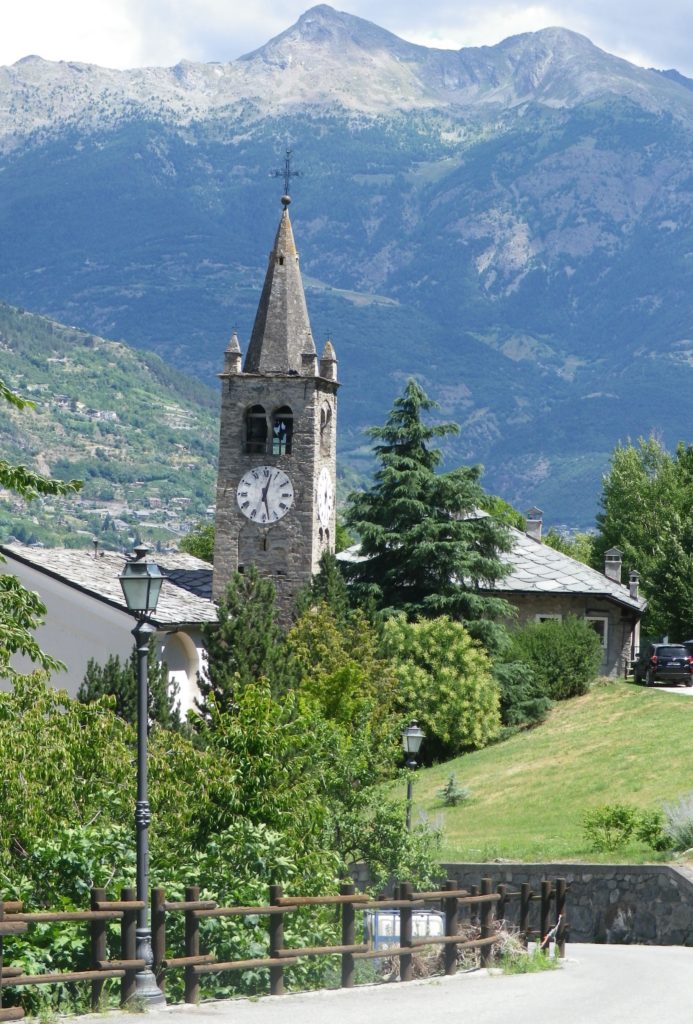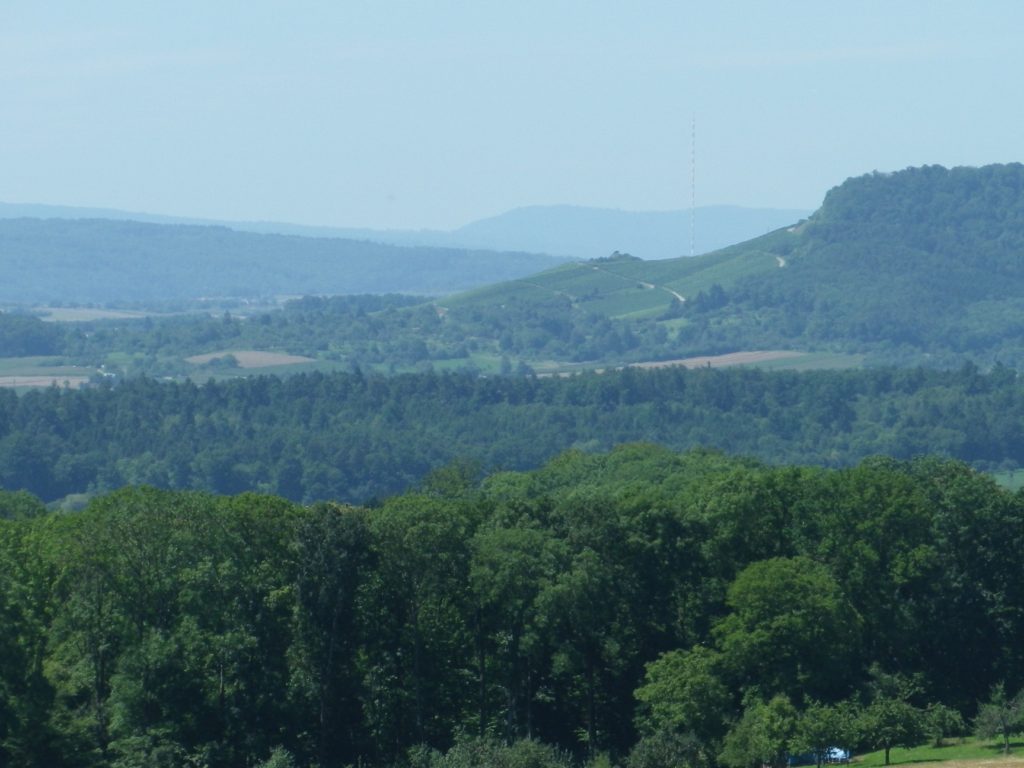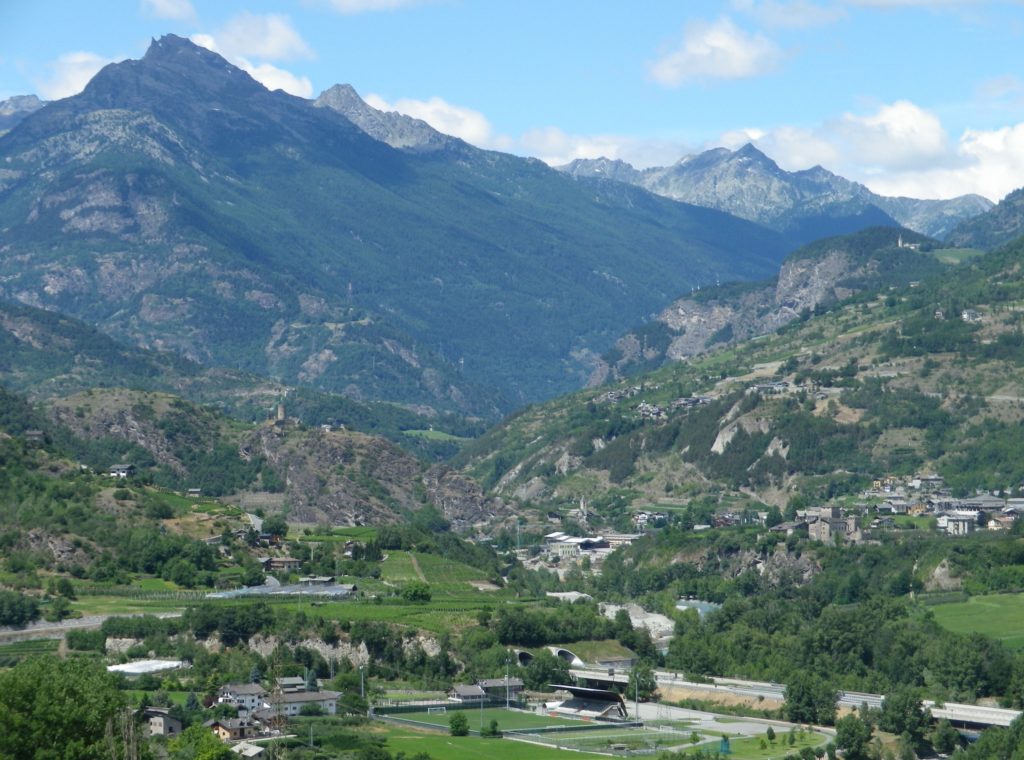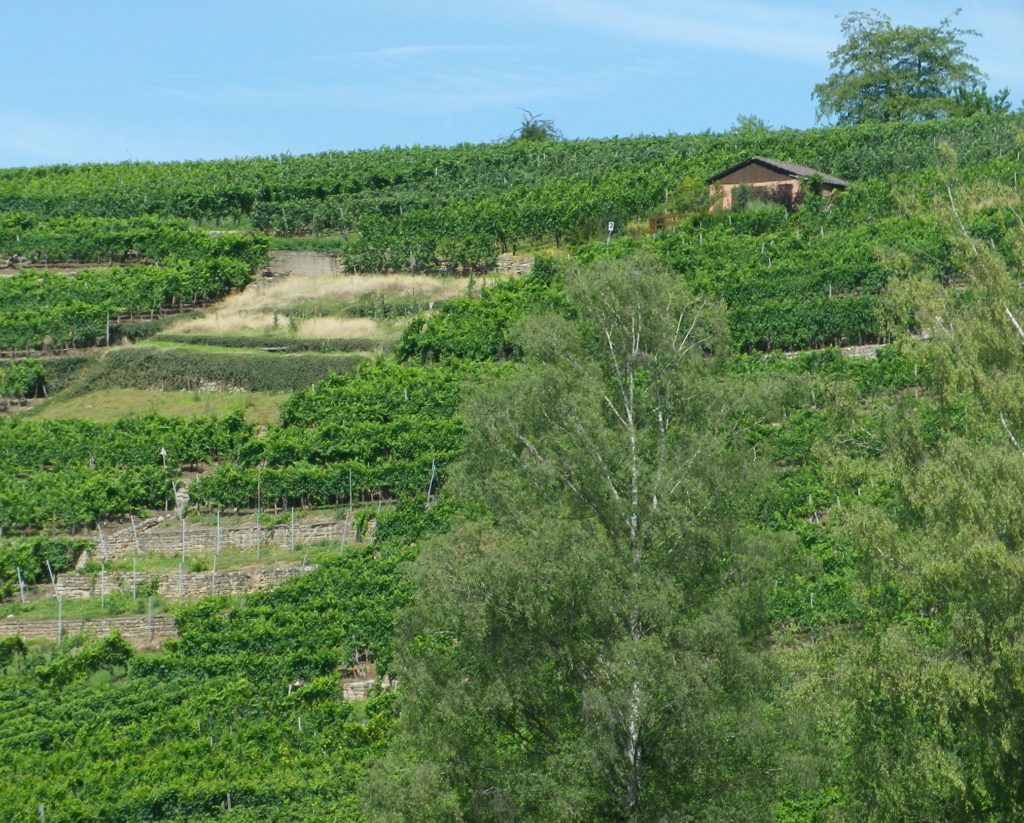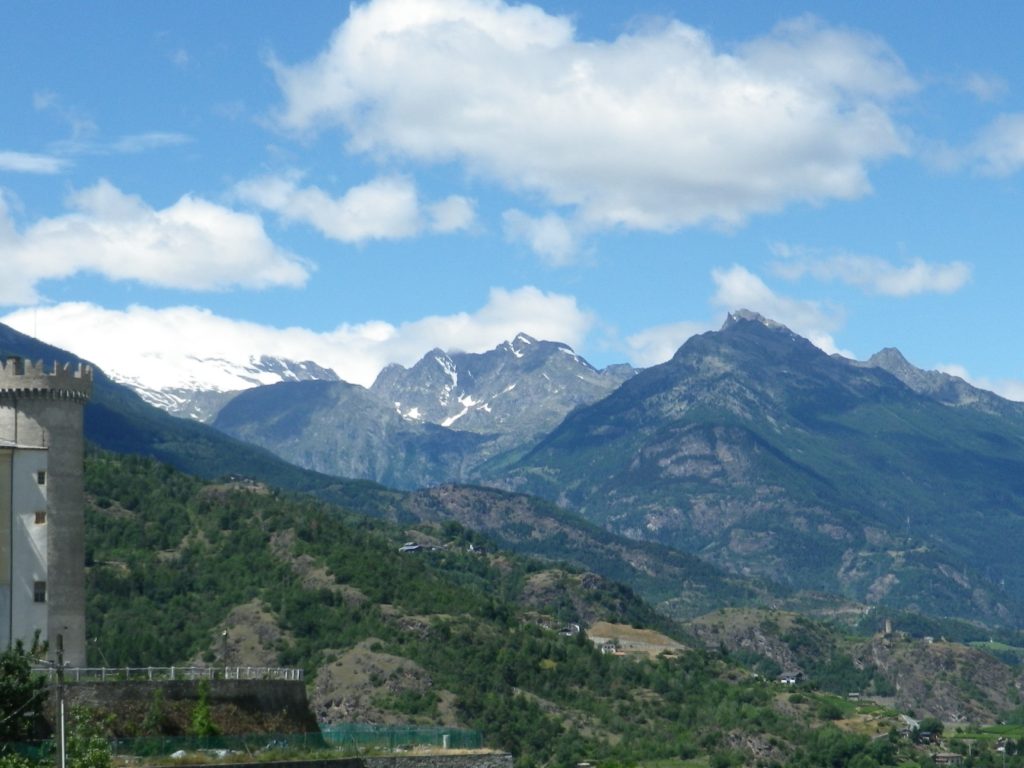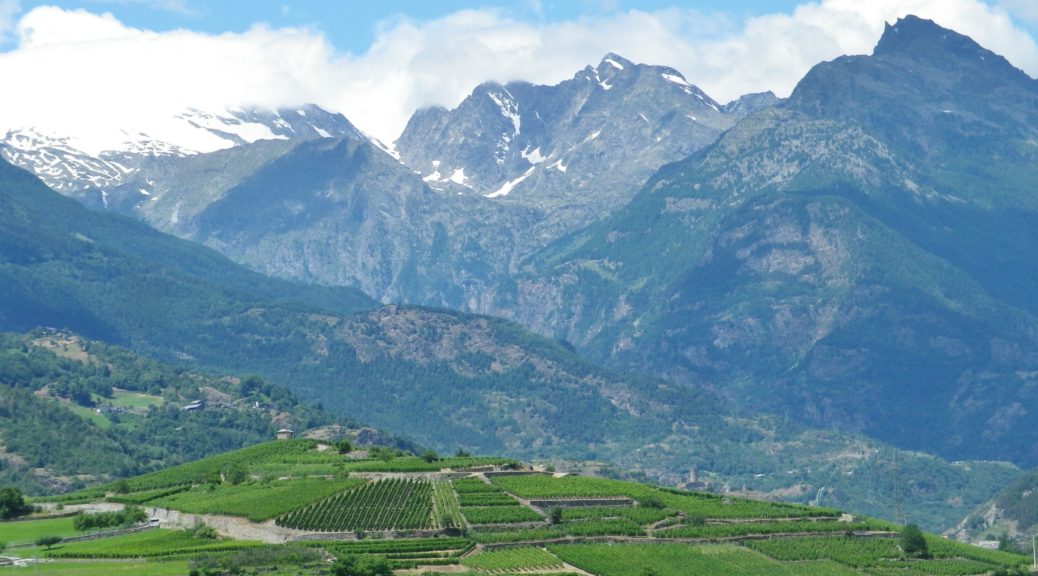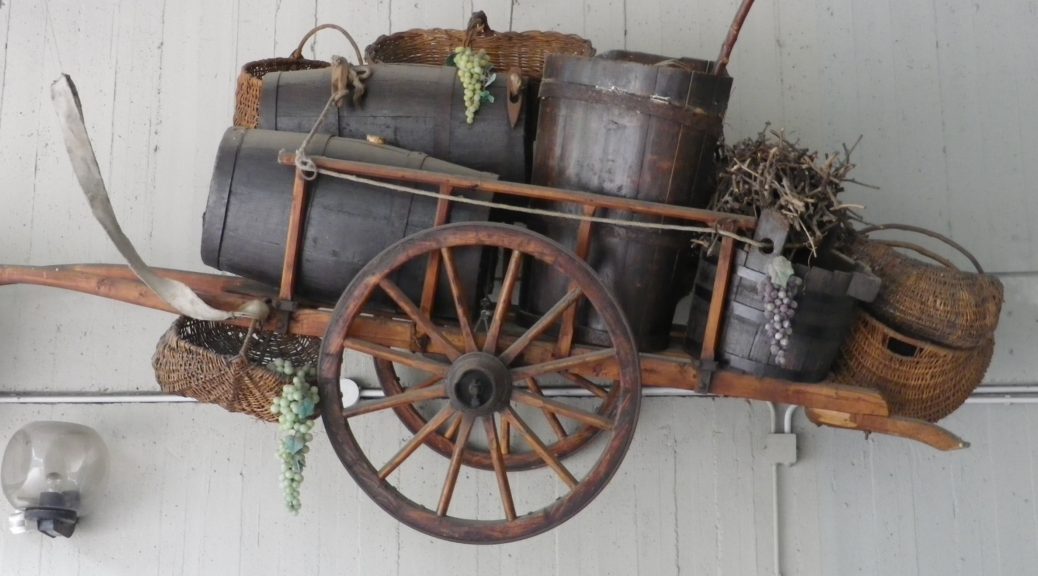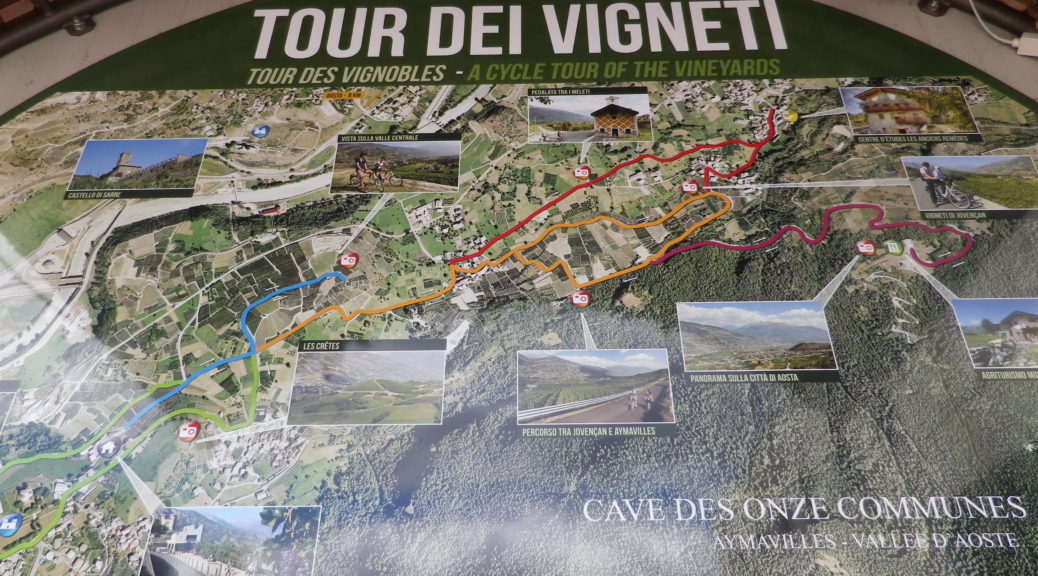Tag Archives: Val d’Aosta
Days of Discovery in Aosta
Recently, I visited a quiet corner of Italy. That is almost a contradiction of terms nowadays, and rather difficult to find in the summer. Seeking a refuge from mass tourism, I came across a bike ride through vineyards in Aosta Valley. Since I had never been there, I decided to make the trip. What a trove of new discoveries of all sorts!
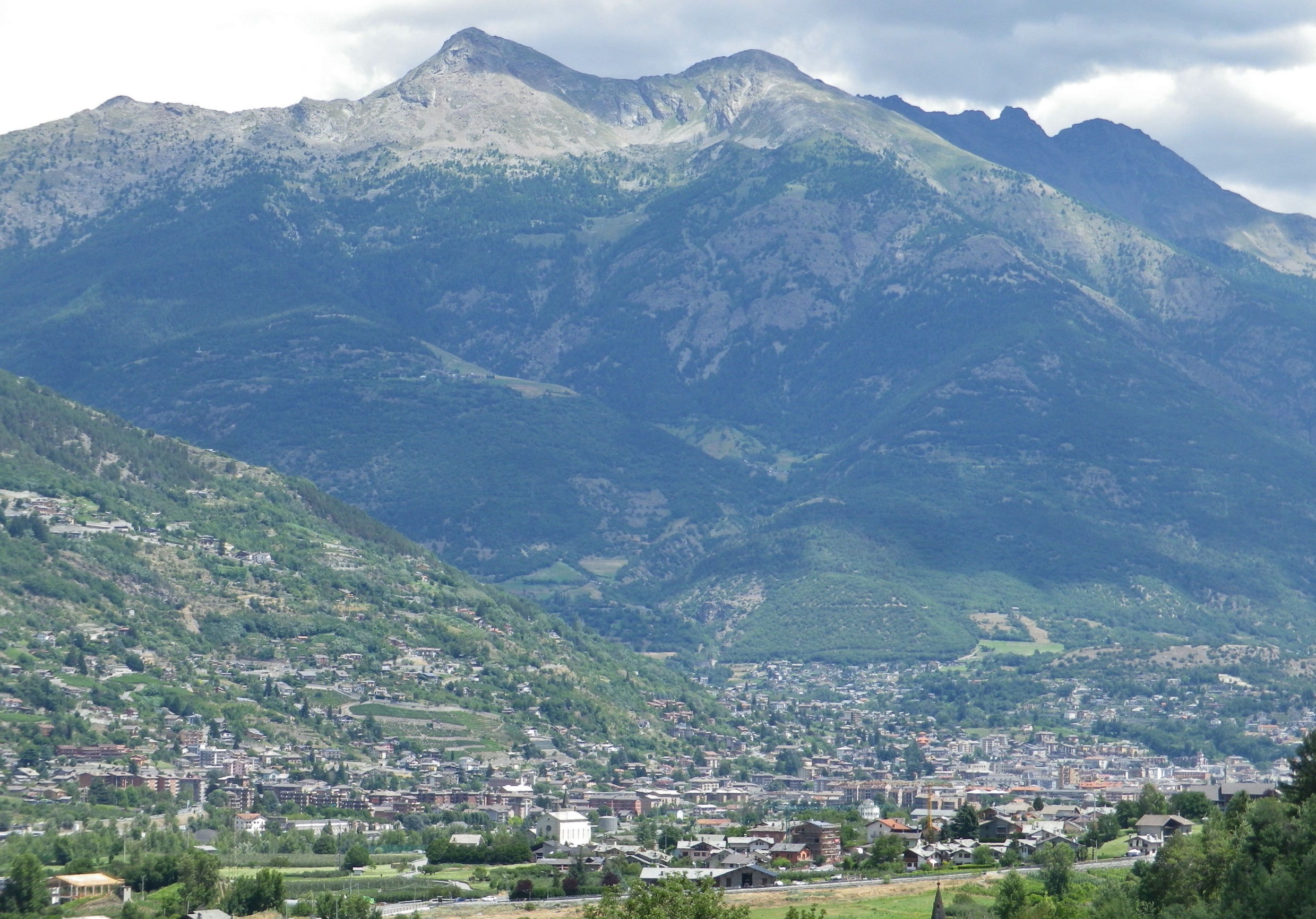
In the first place, the culture is an intriguing mix of French and Italian. Secondly, nature puts on an incredible display of the compelling and pristine: from dramatic Alpine peaks, to well-preserved meadows, to clear, roaring streams. Then, there was the food, and of course the wines.
Personally, I had never seen, or seen offered, a bottle of Aostan wine. But this bike trail was designed to rectify that. There was a clear nexus between the trail design and promotion of the local wine. The trail was designed and promoted by the local wine cooperative, the Cave des Onze Communes, in the heart of Aymavilles, a small Aostan town clinging to a mountainside, dominated by a castle and surrounded by vines.
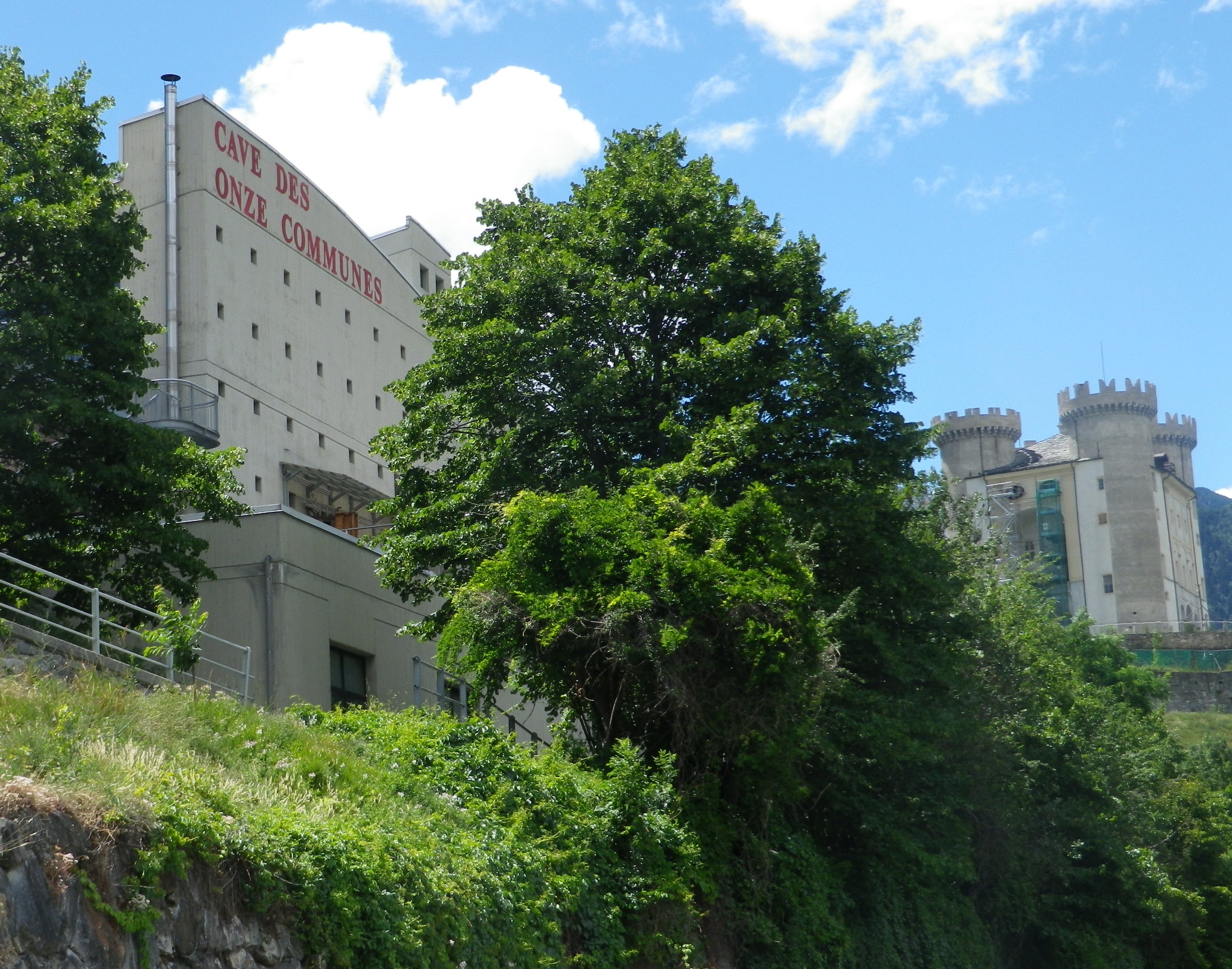
The trail, mostly on low-density/lightly-trafficked roads, either starts at the winery, or near it, or goes around it. There are actually six short segments of trail, three of which radiate from or near the winery. From there, where, and how far to go, is up to the rider.
To lengthen the ride, follow any or all of three other trails which extend from the original three. Circuits and loops may be created, and backtracking to the start is always possible, and in fact mandatory in places. However, at most there are only six miles or so of itinerary to follow, making this ideal for a quick ride.
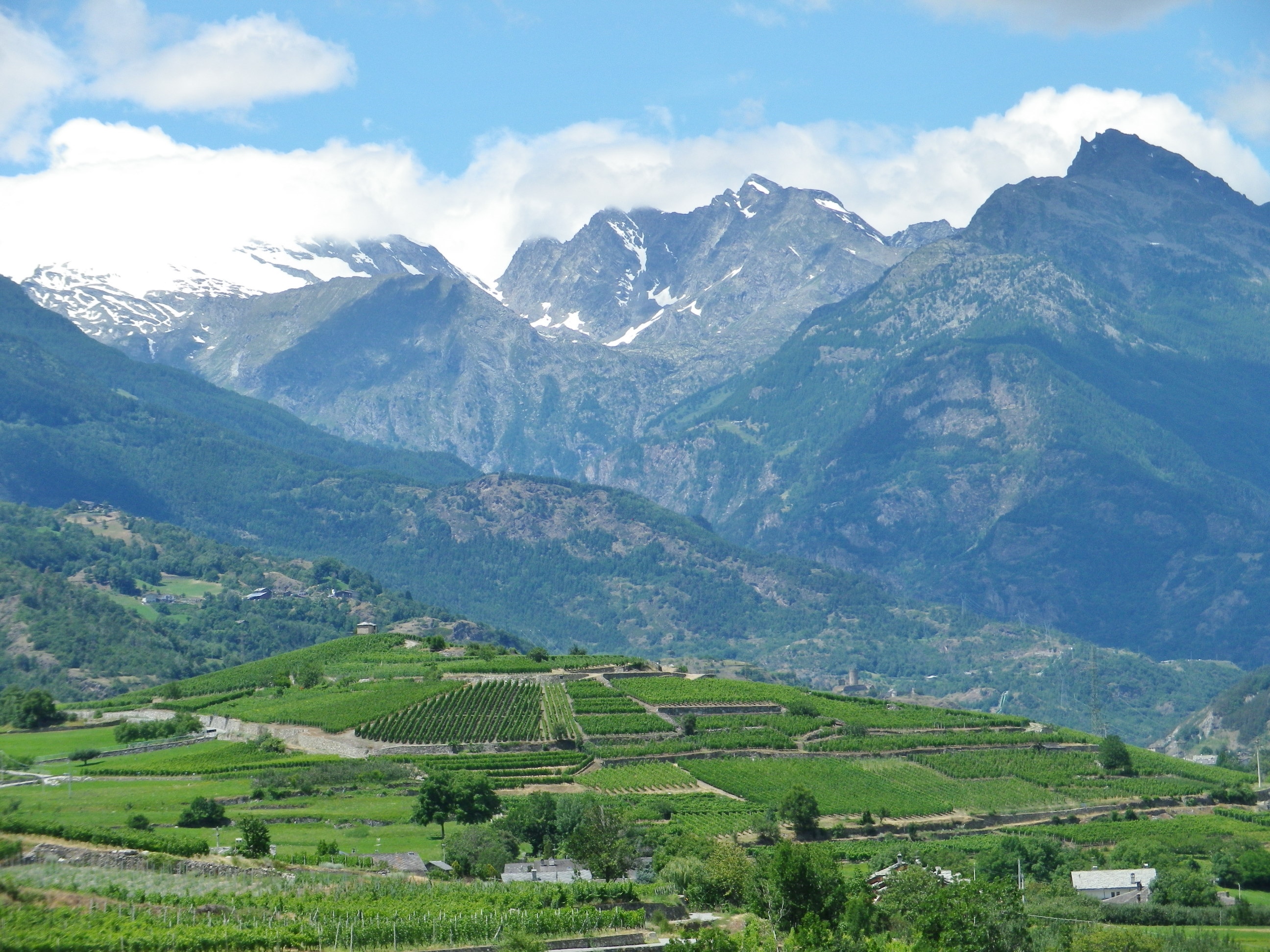
A lovely feature of this trail is the view. Mont Blanc, still topped with snow in July, is visible along part of the way, as is Aosta, the main city, in the opposite direction, further down the valley. The trail passes through vineyards, but also affords views of the vineyards on the other side of the valley. A seeming mirror image of the vineyards through which I cycled, these began low, and rose in a very irregular patchwork of vines to surprising heights on the mountains opposite. Above the vineyards were (mostly) pines, and above the tree line, rocky crags pierced the sky, in a brilliant blue on white contrast. Alternatively, those peaks would occasionally snag a cloud, and remained wreathed for a while in a soft white puff.
Castles were visible now and again, barely registering against the backdrop of such massive mountains. This area was conquered and held by many, from Romans to the House of Savoy, before joining the newly formed Italy in the mid-nineteenth century. However the old churches and houses, with steep rooves and deep overhangs, recall that the worst enemy in this part was, and still can be, the weather.
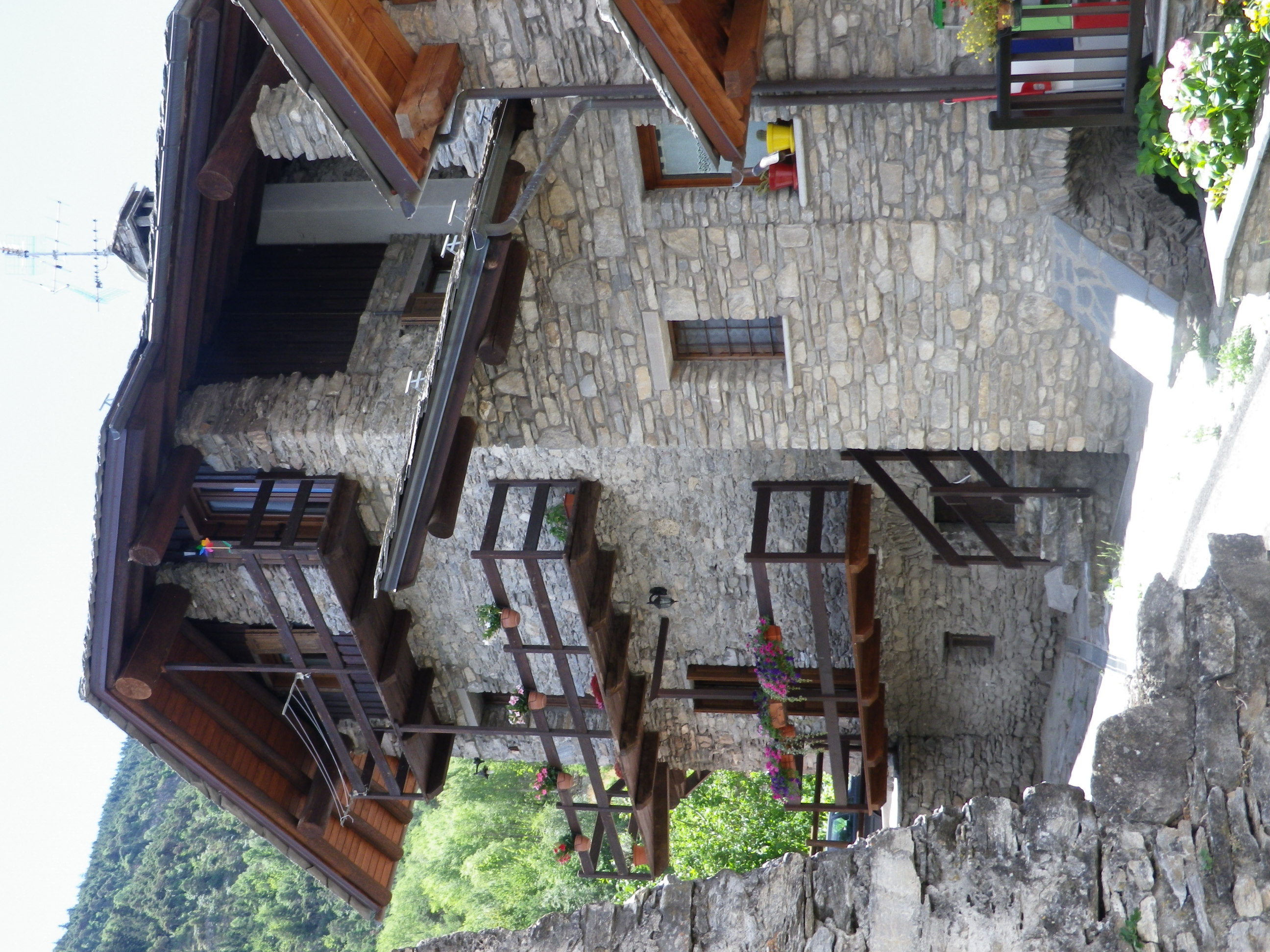
Once back at the winery though, I learned that this area boasts a fair number of local grape varieties, which do well in cold weather, and are more frost-resistant than most. What is more, the varietal wines from the cooperative are delicious, smooth, and quite reasonably priced. Unique grapes and different delicious wines: the best discovery of all!
Wine Notes: Italy’s Val d’Aosta
What I Learned:
Valle d’Aoste (Aosta Valley) is in the northwest corner of Italy, where Italy, France and Franco-phone Switzerland meet. It is an autonomous region with a heavy French influence. This influence, and of course earlier Roman settlement in the region, means that wine and wine production figure heavily in local culture. Being not only in the north, but also at a rather high elevation, wine-making is a challenge. But it is one that local winemakers have accepted, especially those vintners close to the French border, whose vineyards lie at altitudes greater than 1000 meters above sea level. (In fact, these vineyards lying below Mount Blanc (itself over 4800 meters above sea level), claim to include the highest vineyard in Europe.) While there are other contenders to that title elsewhere in Europe, there can be no doubt that Val d’Aosta winemakers work in seriously mountainous terroir.
While winemaking in such mountainous terrain is not commonplace, it is hardly unique. What is unique however may be found in the high number of native grape varieties. Both red and white varietals grow here, and thrive in the local conditions. The paragraphs below list some of the varietals, both red and white, that are native to the Aosta Valley.
The red varietal Fumin is widely cultivated throughout the central part of the Aosta Valley. Judging from the variety of Fumin Aosta DOC wines on offer, this grape produces a popular varietal wine. Cornalin is another local red varietal, which also produces an Aosta DOC varietal wine. Just over the mountains in the Swiss canton of Valais, the same grape is called Humagne Rouge. Italian vintners cultivate this varietal much less extensively than their Swiss counterparts though.
However, the most widely cultivated local varietal is the Petit Rouge in the Aosta Valley. Second place in terms of hectares cultivated goes to the Vien de Nus, a varietal named after its alleged place of origin. A minimum of 70% of Petit Rouge must be present in the Aosta DOC red wine, Torrette. Vien de Nus may be added to a Torrette cuvee, but it is never vinified as a varietal wine.
The early maturing Mayolet, almost extinct, has been rediscovered. It may be vinified as a varietal wine, a rare find, or may be added to the Torrette DOC blend.
In contrast, there is only one white varietal native to the valley. The Prie Blanc, also known as the Blanc de Morgex, is capable of maturing in some of the most elevated Valdostan vineyards. It is, as it would have to be, resistant to frosts and cold. Planted in some of the highest vineyards in Italy, it is not unusual to find that vintners make sparkling and sweet wines with this grape, although varietal wines are also produced.
What I Tasted:
2016 Pinot Gris, Valle d’Aoste Denominazione di Origine Controllata, Cave Gargantua (Gresson): A dry white wine with medium minus gold color; a citrus and peach nose, with peach, nuts and vanilla flavors; medium minus acidity, with a smooth, full-bodied finish.
2015 Fumin Barrique, Valle d’Aoste Denominazione di Origine Controllata, Cave des Onze Communes (Aymavilles): A dry red wine with dark ruby color; nose of spice, smoke and oak, with vanilla, dried cherry and red berry flavors; high tannins, with a smooth finish.
2015 Torrette Superieur, Valle d’Aoste Denominazione di Origine Controllata, Cave des Onze Communes (Aymavilles): A dry red wine blend (Petit Rouge 80%, Fumin 10-15%, Mayolet and Cornalin 5-10%) with dark garnet color; dried red berry nose, with dried red berry, blackberry, oak and vanilla flavors; medium tannins and a long, smooth finish (TDA)
2014 Petite Arvine, Valle d’Aoste Denominazione di Origine Controllata, Feudo di Maurizio (Serre): A dry white wine with medium gold color; mineral nose, with spice, wood, honey and mustard flavors; medium acidity.
Blanc Fripon, Valle d’Aoste Denominazione di Origine Controllata, Quatre Mille Metres (Chambave) with Cave Mont Blanc de Morgex et La Salle (Morgex): A dry, spumante white wine (Prie Blanc 65%, Mueller Thurgau 35%) rather still, with a light gold color; floral and fruity nose, with floral and sweet apple flavors; medium acidity.
Tour dei Vigneti: Trail in a Nutshell
Trail Name: Tour dei Vigneti
Trail Type: Short to medium distance; almost exclusively paved, well maintained, but the route itself is not always marked.
Length:
Segments – 1.5, 3.5, 5, 5.5, 8 and 10 kilometers/6 miles
Total – Variable, depending on trail segments taken
Convenient to: Aosta, Italy
Marking: Green rectangular Sign with white lettering “Tour dei Vigneti” and a number
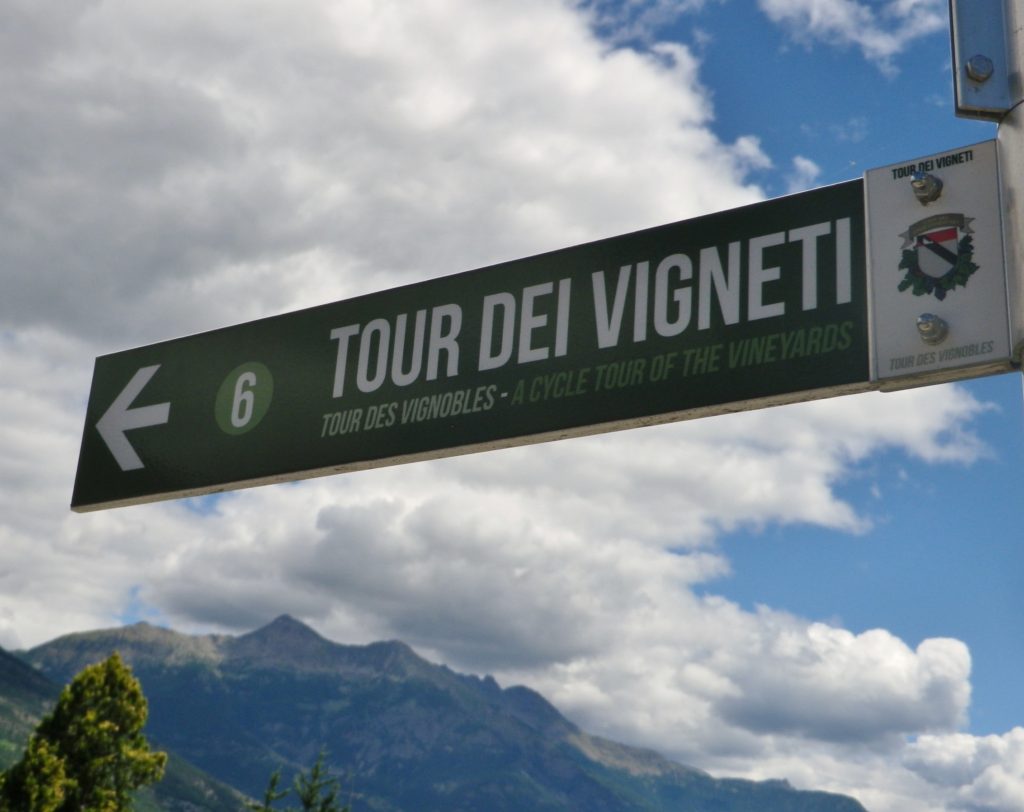
Trail Description: A series of short, one-way routes along dirt paths or little-traveled roads covering the village of Aymavilles and nearby hamlets. The numbered routes range from easy (most segments) to difficult, and may be combined according to time and/or ability, and to form circuits.
Trailhead: Cave des Onze Communes, Frazione Micheley, Aymavilles
Parking:
Aymavilles –
Small lot along SR47, just south of the Old Grizzly Café, and another lot further up the road between the roads Micheley and Urbains
In Frazione Vecellod, along street of the same name, just after the sign for the road to Aosta.
Pompoid – by the playground/sports field (basketball and soccer)
Public Transportation Options:
Bus: Societa Valdostana Autoservizi Pubblici (SVAP) Aosta-Cogne line, services Aymavilles from Aosta
Rail: No rail service to Aymavilles. (The closest rail station is in St. Pierre, about 4 kilometers distant.)
Suggested Stages:
This is a series of linked trails, branching off from one another, therefore you can choose which segments you want to do, for a total of about 10 kilometers
Trail Itinerary-Reference Points:
Aymavilles: Frazione Micheley, behind small mount and return, Frazione Pompiod; Pompiod: through village center, past soccer and basketball court, through fields; Jovencan: Frazione Adams, Frazione Pinga, Frazione Jobel, retrace partly; head to Agriturismo Mont Rosset, retrace; Pompiod: through fields and vineyards; Pompiod: retrace trail to small mount to the wine cooperative, but head south on Frazione Urbains, then Franzione Micheley around the castle; return to start.
Representative Trail Photos:
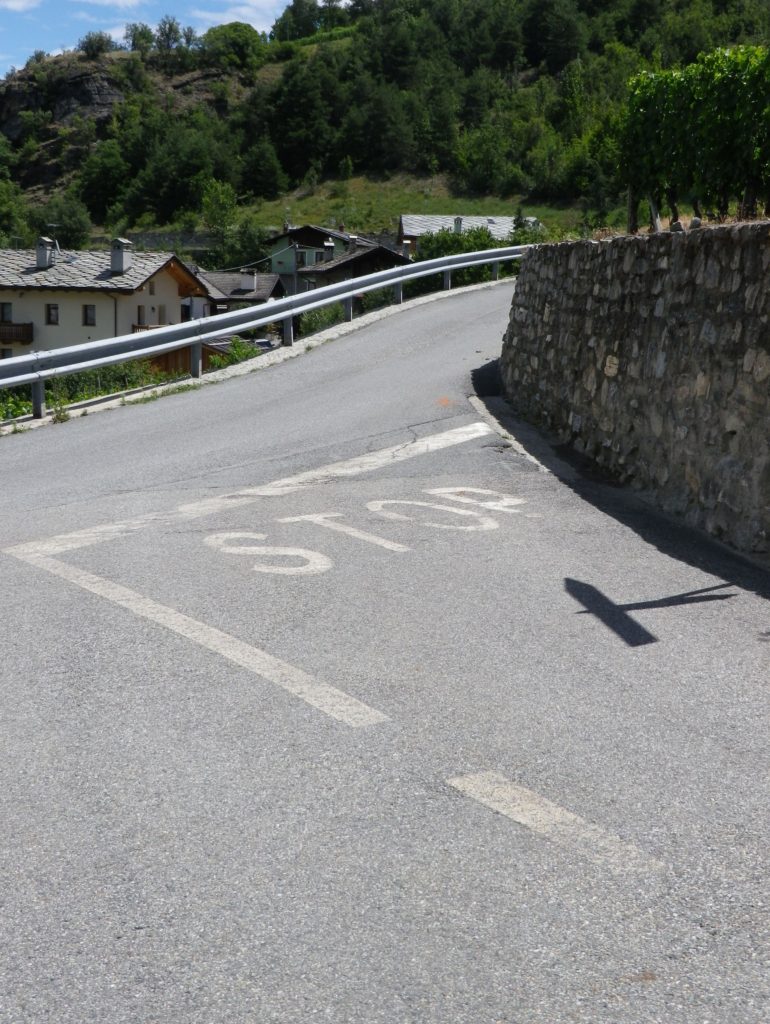
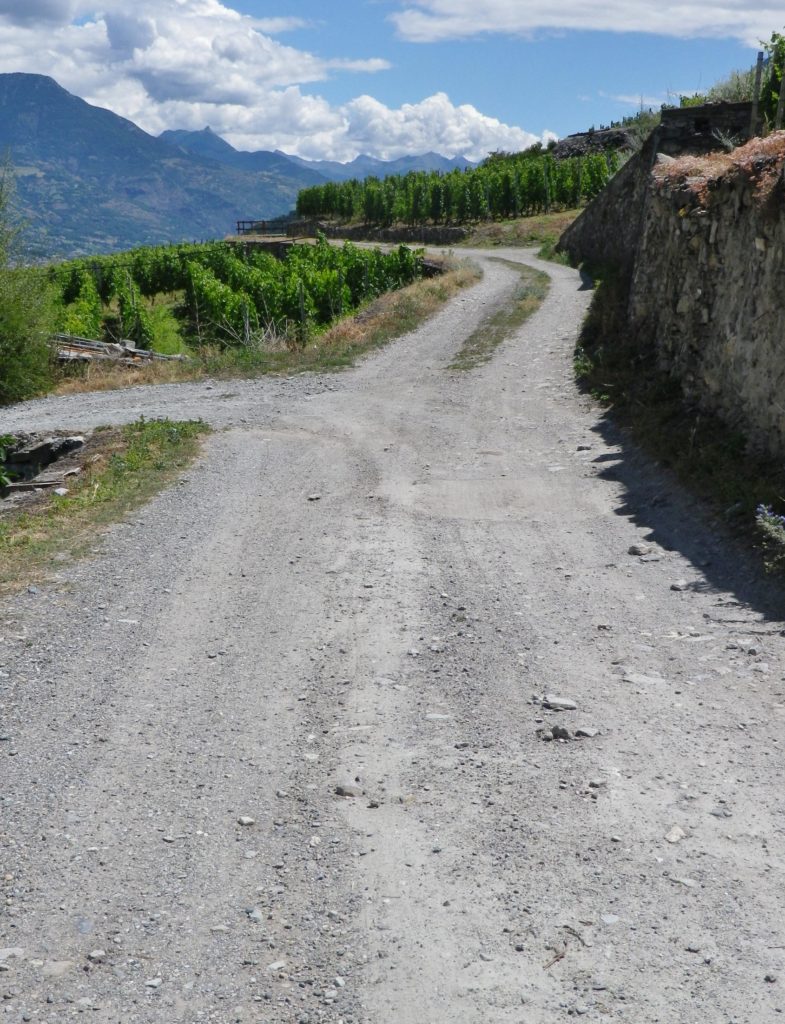
Restrooms: Aymavilles – on the lower part of SR 47 x Frazione Chef Lieu, by the church clock tower
Attractions on or near Trail:
Tasting along the Trail:
In Aymavilles, both Cave des Onze Communes and Les Cretes Viticoltori are open most days for visitors, morning and afternoon.
Alternative Options:
Hiking: Vignes et Terroirs vineyards series trails; a short circuit starts in Aymavilles.
Car: Routes de Vins Valle d’Aoste, a series of five short routes totaling about 130 kilometers, almost interlocking, covering the Aosta Valley wine producing areas.
Additional Information:
Regional: http://www.lovevda.it/en
Trail (segment) specific: http://www.caveonzecommunes.it/tour-dei-vigneti/
Comments:
The Aymavilles wine-making community designed this system of cycling itineraries for E-Bikes, which along with regular bicycles, may be rented locally. While mountain bikes are not necessary, sturdy tires are, as parts of the trail are not on asphalt! (See the photos above.)
Obviously a very short ride, but its several variations adds to its attraction. Any number of variations could prove feasible to families with tweens and teens looking for a late afternoon’s diversion; and for an early morning constitutional!
